Dashboard: Filter Bricks
Main page content


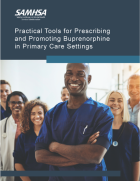
This resource provides information to primary care providers and practices on how to implement opioid use disorder treatment using buprenorphine. It identifies common barriers and strategies to overcome them. It documents step-by-step tactics to support buprenorphine implementation.

This brochure features the national Disaster Distress Helpline, which supports people who are coping with the after effects of a disaster. Learn about a disasters’ potential to cause psychological stress, warning signs of distress, and tips for coping.
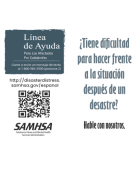
This wallet-size card includes the national Disaster Distress Helpline and lists warning signs of distress. It encourages those experiencing signs of psychological stress to call or text the helpline for support.
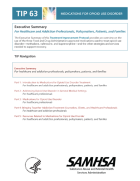
The Executive Summary of this Treatment Improvement Protocol provides an overview on the use of the three Food and Drug Administration-approved medications used to treat opioid use disorder—methadone, naltrexone, and buprenorphine—and the other strategies and services needed to support recovery.

This Treatment Improvement Protocol (TIP) reviews the use of the three Food and Drug Administration (FDA)-approved medications used to treat OUD—methadone, naltrexone, and buprenorphine—and the other strategies and services needed to support recovery for people with OUD. This is a revision.
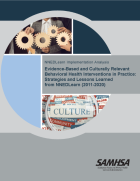
This report provides findings from a qualitative analysis of evidence-based and culturally relevant behavioral health practices offered at NNEDLearn, a SAMHSA training, offered from 2011 to 2020. It includes an overview of NNEDLearn, case studies, strategies and lessons learned, and conclusion.

This guide reviews ways that telehealth modalities can be used to provide treatment for serious mental illness and substance use disorders among adults, distills the research into recommendations for practice, and provides examples of how these recommendations can be implemented.
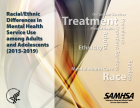
This chartbook uses combined 2015 to 2019 data from the National Survey on Drug Use and Health (NSDUH) to present nationally representative estimates of mental health service utilization among adults aged 18 or older and adolescents aged 12 to 17 within different racial/ethnic groups in the United States. The percentages are annual averages.
Displaying 1 - 10 out of 76

